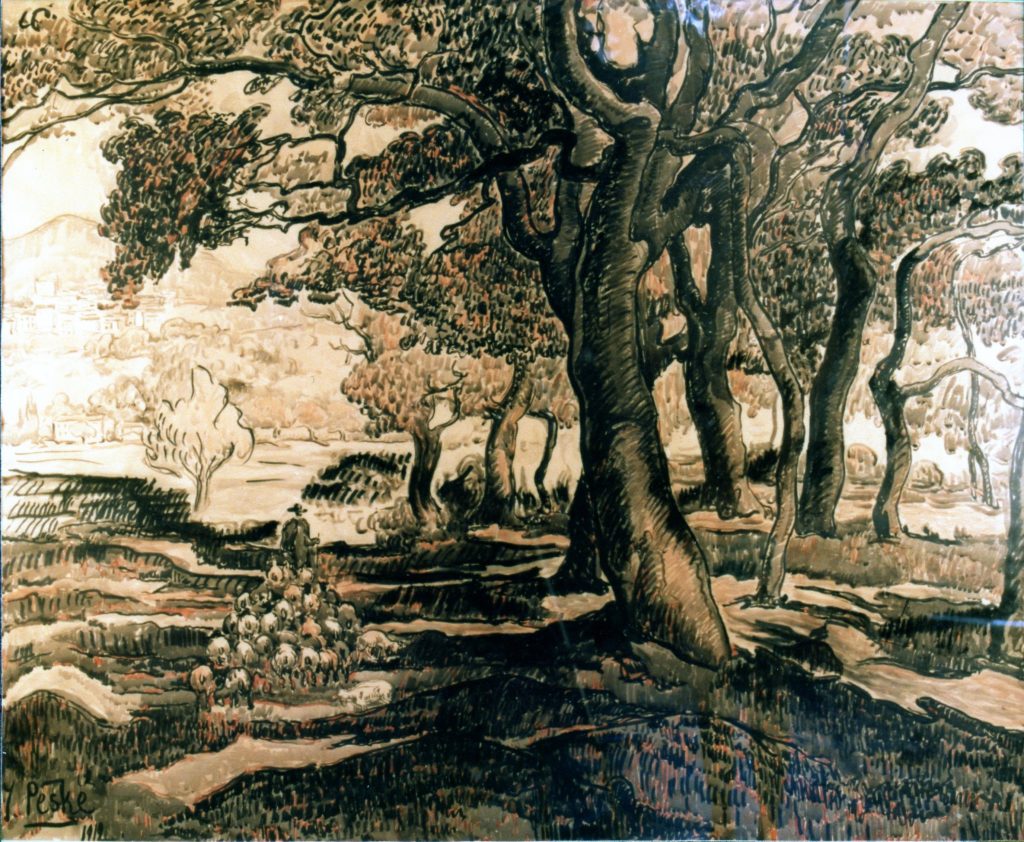Of Russian-Polish origin, Jean Peské was born in 1870. He first attended the School of Painting in Kiev, then the School of Fine Arts in Odessa and finally in Warsaw. Having inherited his father’s estate at the age of 21, he used the means at his disposal to emigrate to France in 1891 and enrolled at the Académie Julian in Paris. He became friends with great painters such as Pissarro, Bonnard, Vuillard and Paul Signac, who influenced him towards pointillism.
From 1900, he became friends with Toulouse Lautrec and found his place among the Post-Impressionists by developing a touching and harmonious personal art: oil painting, watercolor, engraving and drawings. His admiration for Claude Monet is reflected in his later works where he develops a personal style rooted in landscape painting and inspired by his stays on the Mediterranean coast. Jean Peské painted the light and colors of the Provençal summers using his own technique, the wash drawing enhanced with Indian ink, an innovative technique for the time.
It is from 1910, in the South and particularly in Bormes-les-Mimosas, that the painter tries to tame the light. His period in Bormes is the most colorful and warmest. It is also the period of his artistic maturity and family happiness, surrounded by his wife Catherine Louchnikoff and their four young children.
After living in the village, he built a small house on the Pointe de Gouron in La Favière and divided his life between Bormes and Paris for about fifteen years. His favorite subjects were trees, his lifelong passion, but also members of his family and Mediterranean landscapes.
In 2019, the city of Bormes-les-Mimosas received a gift of three works from Jean Peské’s granddaughter, Mrs. Pira Salin, a sanguine, “La chapelle Saint-François”, a pastel entitled “Portait du docteur Bérenguier and the painting “La plaine de Bormes”.
These three acquisitions testify to the affection that Jean Peské had for the village; the painter having frequented the Russian community of La Favière, whose settlement in the town constitutes an important contemporary episode in his evolution.
In 2022, the MHAB acquired a new work on paper by Jean Peské, illustrating his passion for trees. Chatainier dans un paysage echoes his large-format work le grand chêne liège, already in the museum and recently restored. Both testify to the artist’s dexterity and inventiveness when working in wash and ink.

Artist : Jean Peské
Date of creation: 1912
Material and technique: Watercolor ink on paper
Dimensions: H. 130 cm, W. 160 cm,
Inventory number : 1926.16.1

